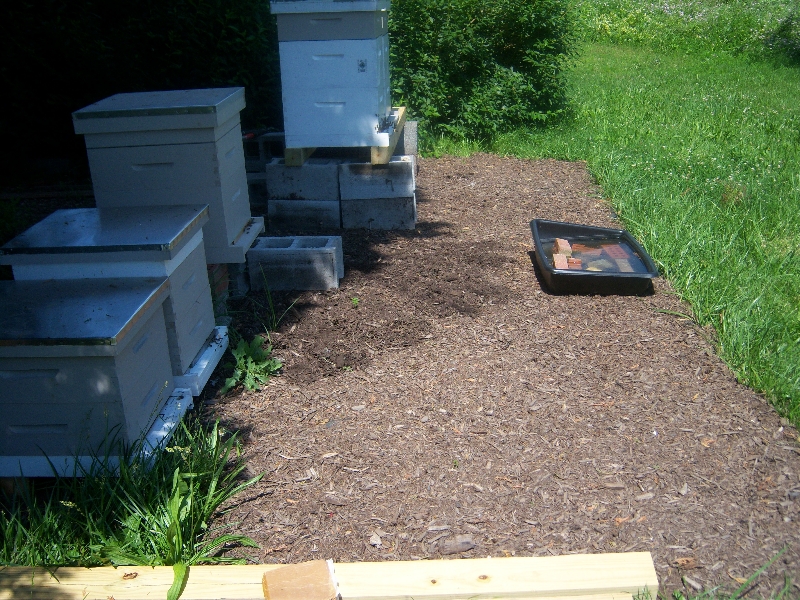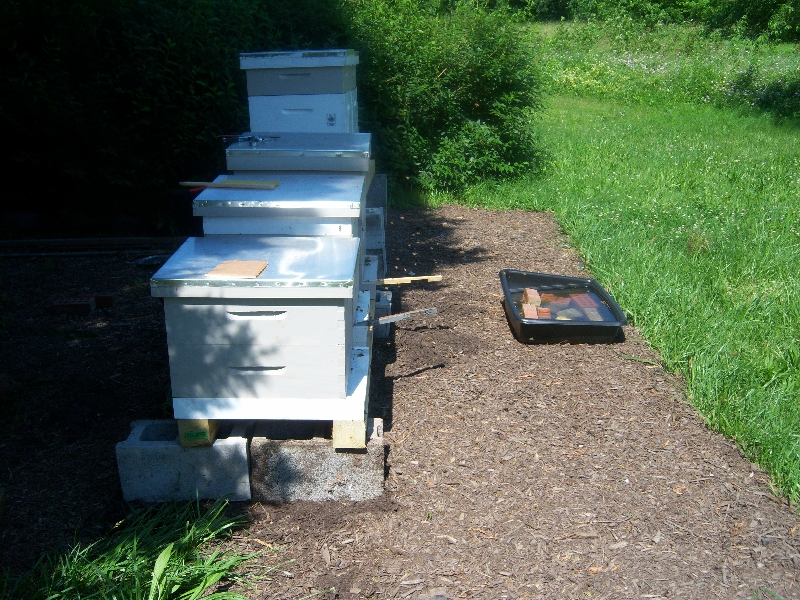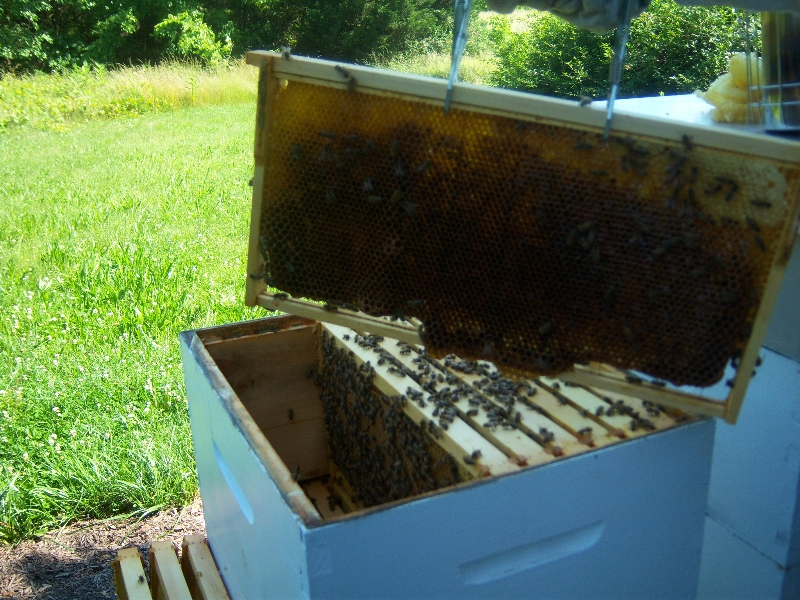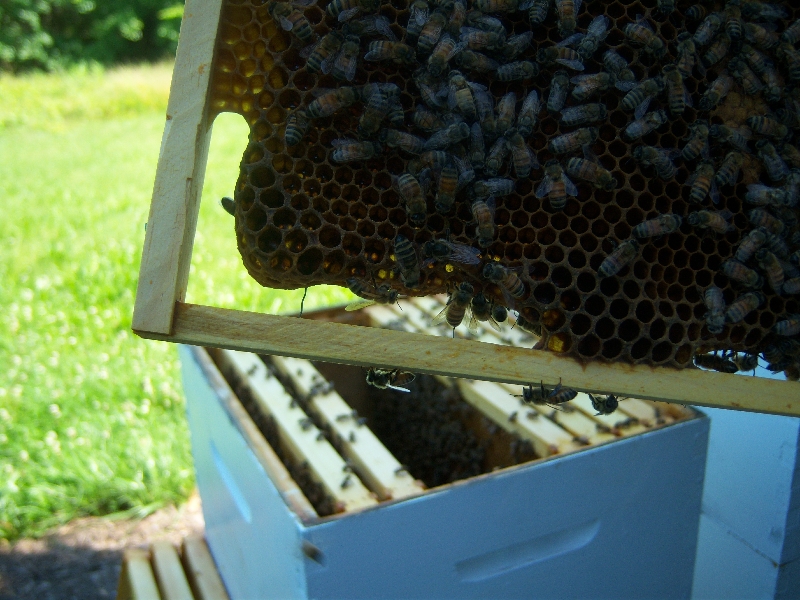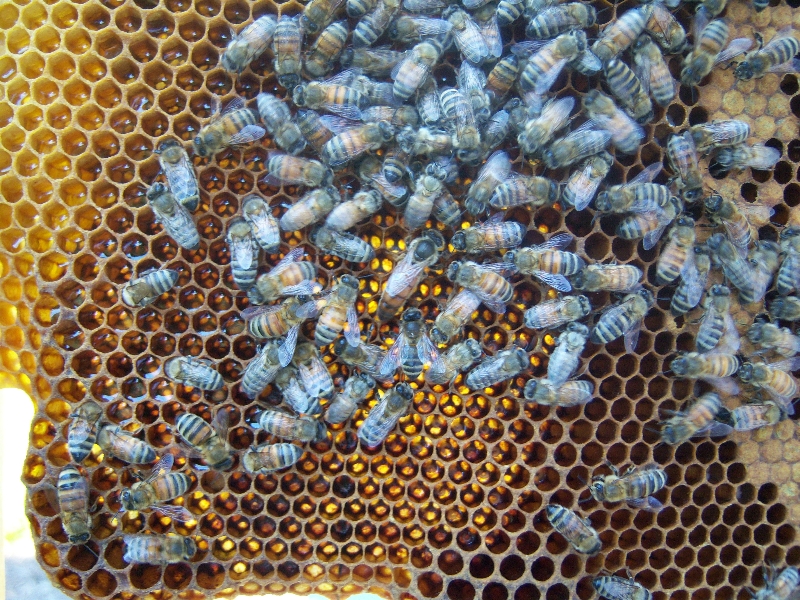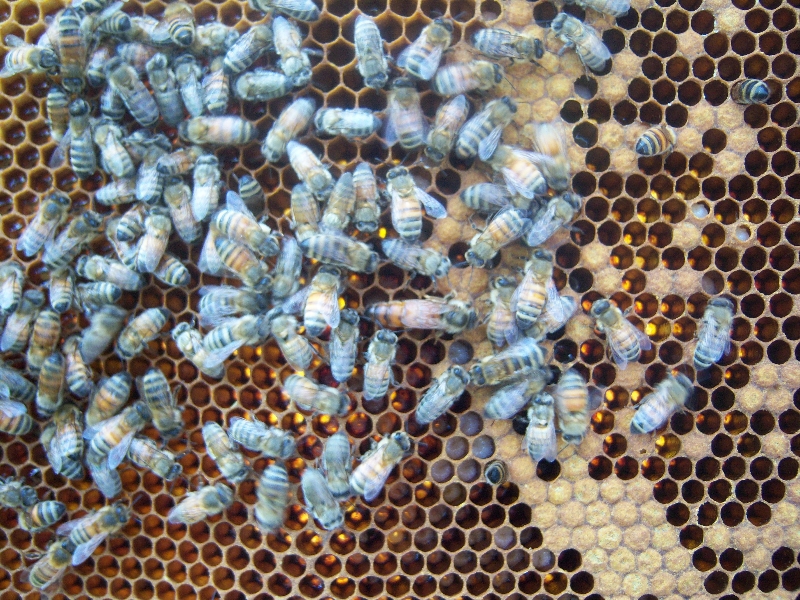May bee inspection
I needed to move the last three hives out about two feet to have more room to move around behind the boxes. The set up was fine when there were only two hives, but when I added the three new ones this spring, I was just too cramped. It’s a daunting task, really, to move three hives forward two feed in the middle of the day. In order to do it I needed to temporarily move them to the side in order to move cinder blocks and 4 x 4 supports. When the hives are moved four feet to the side or back, the returning foragers can’t find the hive and the cloud of bees just gets thicker and thicker. So time is of the essence. I got them moved and the bees were pretty tolerant considering the disruption.
After moving hives 3, 4, and 5, I really wanted to look inside hives 1 and 5 because there was so little activity at the hive entrance that I was worried that they might be dead. They weren’t. Hive 1 (formerly Boston, and with five now I decided numbers were just going to be easier) had nothing in the honey super – no surprise there – but there certainly were bees in both deep boxes. Ok, so there are bees, but is there a laying queen. I have not seen a queen or any eggs since the hive swarmed seven weeks ago. In fact, I really hadn’t looked. I was going on faith that the hive had a new queen. The good news is that there was brood and a real live queen whom I saw after looking casually at just a few frames. You can see her in a couple of the close-ups above. That was just dumb luck. So I don’t really know why that hive has so little foraging going on, but it might have to do with the swarming and cycle of brood. At this point, I rather expect to see a large increase in the population very soon, and the young bees will soon become foragers. Time will tell.
Hive 2 has been super busy at the entrance and has more bees inside, but I didn’t inspect today.
Hive 3 was the new Georgia bee hive that I think swarmed twice. It has the comb in the feeder box above a queen excluder. The feeder box was acting like a honey super. I should have realized this, but there were lots of drones trapped in that box because they couldn’t get down through the excluder and they probably ate all the honey that had been stored there. It looked mostly empty. There is a screened cover over the feeder box, but it might not have an escape. I removed the queen excluder, mostly to let the drones out. I might just clean out the comb, the next time I inspect.
Hive 4 had a feeder box with nothing in it except a few larvae that might have been Small Hive Beetles. There was one large white larva that I removed and killed. Not sure what it was. It was 10 times the size of the small larvae.
Hive 5 had bees as it turned out, but, again, they were very quiet at the entrance. It was swarm 3, so the first of the Georgia swarms. It should, therefore, have a marked queen. As I recall, these are marked white even thought Jason Hough said they were 2012 queens which should be yellow, I think. I guess I just will never know for sure. But I should be able to find that queen and get a picture of her one of these days.
I still haven’t done anything to measure varroa, so that is another project that needs to happen soon.
